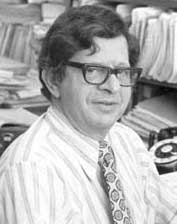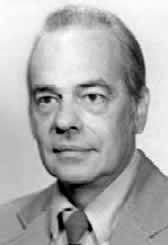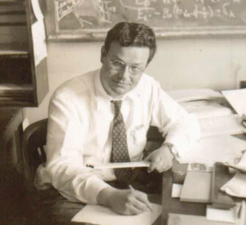Related Research Articles

Actinium is a chemical element with the symbol Ac and atomic number 89. It was first isolated by Friedrich Oskar Giesel in 1902, who gave it the name emanium; the element got its name by being wrongly identified with a substance André-Louis Debierne found in 1899 and called actinium. Actinium gave the name to the actinide series, a group of 15 similar elements between actinium and lawrencium in the periodic table. Together with polonium, radium, and radon, actinium was one of the first non-primordial radioactive elements to be isolated.
The discovery of the 118 chemical elements known to exist as of 2022 is presented in chronological order. The elements are listed generally in the order in which each was first defined as the pure element, as the exact date of discovery of most elements cannot be accurately determined. There are plans to synthesize more elements, and it is not known how many elements are possible.

Francium is a chemical element with the symbol Fr and atomic number 87. It is extremely radioactive; its most stable isotope, francium-223, has a half-life of only 22 minutes. It is the second-most electropositive element, behind only caesium, and is the second rarest naturally occurring element. The isotopes of francium decay quickly into astatine, radium, and radon. The electronic structure of a francium atom is [Rn] 7s1, and so the element is classed as an alkali metal.

Neptunium is a chemical element with the symbol Np and atomic number 93. A radioactive actinide metal, neptunium is the first transuranic element. Its position in the periodic table just after uranium, named after the planet Uranus, led to it being named after Neptune, the next planet beyond Uranus. A neptunium atom has 93 protons and 93 electrons, of which seven are valence electrons. Neptunium metal is silvery and tarnishes when exposed to air. The element occurs in three allotropic forms and it normally exhibits five oxidation states, ranging from +3 to +7. It is radioactive, poisonous, pyrophoric, and capable of accumulating in bones, which makes the handling of neptunium dangerous.

Promethium is a chemical element with the symbol Pm and atomic number 61. All of its isotopes are radioactive; it is extremely rare, with only about 500–600 grams naturally occurring in Earth's crust at any given time. Promethium is one of only two radioactive elements that are followed in the periodic table by elements with stable forms, the other being technetium. Chemically, promethium is a lanthanide. Promethium shows only one stable oxidation state of +3.

Technetium is a chemical element with the symbol Tc and atomic number 43. It is the lightest element whose isotopes are all radioactive. Nearly all available technetium is produced as a synthetic element. Naturally occurring technetium is a spontaneous fission product in uranium ore and thorium ore, the most common source, or the product of neutron capture in molybdenum ores. The silvery gray, crystalline transition metal lies between manganese and rhenium in group 7 of the periodic table, and its chemical properties are intermediate between those of both adjacent elements. The most common naturally occurring isotope is 99Tc, in traces only.
A radionuclide is a nuclide that has excess nuclear energy, making it unstable. This excess energy can be used in one of three ways: emitted from the nucleus as gamma radiation; transferred to one of its electrons to release it as a conversion electron; or used to create and emit a new particle from the nucleus. During those processes, the radionuclide is said to undergo radioactive decay. These emissions are considered ionizing radiation because they are powerful enough to liberate an electron from another atom. The radioactive decay can produce a stable nuclide or will sometimes produce a new unstable radionuclide which may undergo further decay. Radioactive decay is a random process at the level of single atoms: it is impossible to predict when one particular atom will decay. However, for a collection of atoms of a single nuclide the decay rate, and thus the half-life (t1/2) for that collection, can be calculated from their measured decay constants. The range of the half-lives of radioactive atoms has no known limits and spans a time range of over 55 orders of magnitude.

Edwin Mattison McMillan was an American physicist and Nobel laureate credited with being the first-ever to produce a transuranium element, neptunium. For this, he shared the Nobel Prize in Chemistry with Glenn Seaborg in 1951.

In nuclear science, the decay chain refers to a series of radioactive decays of different radioactive decay products as a sequential series of transformations. It is also known as a "radioactive cascade". Most radioisotopes do not decay directly to a stable state, but rather undergo a series of decays until eventually a stable isotope is reached.

Nuclear chemistry is the sub-field of chemistry dealing with radioactivity, nuclear processes, and transformations in the nuclei of atoms, such as nuclear transmutation and nuclear properties.

Willard Frank Libby was an American physical chemist noted for his role in the 1949 development of radiocarbon dating, a process which revolutionized archaeology and palaeontology. For his contributions to the team that developed this process, Libby was awarded the Nobel Prize in Chemistry in 1960.

Jacob Akiba Marinsky was a chemist who was the co-discoverer of the element promethium.
Lead (82Pb) has four stable isotopes: 204Pb, 206Pb, 207Pb, 208Pb. Lead-204 is entirely a primordial nuclide and is not a radiogenic nuclide. The three isotopes lead-206, lead-207, and lead-208 represent the ends of three decay chains: the uranium series, the actinium series, and the thorium series, respectively; a fourth decay chain, the neptunium series, terminates with the thallium isotope 205Tl. The three series terminating in lead represent the decay chain products of long-lived primordial 238U, 235U, and 232Th, respectively. However, each of them also occurs, to some extent, as primordial isotopes that were made in supernovae, rather than radiogenically as daughter products. The fixed ratio of lead-204 to the primordial amounts of the other lead isotopes may be used as the baseline to estimate the extra amounts of radiogenic lead present in rocks as a result of decay from uranium and thorium..
Promethium (61Pm) is an artificial element, except in trace quantities as a product of spontaneous fission of 238U and 235U and alpha decay of 151Eu, and thus a standard atomic weight cannot be given. Like all artificial elements, it has no stable isotopes. It was first synthesized in 1945.
Technetium (43Tc) is the first of the two elements lighter than bismuth that have no stable isotopes; the other such element is promethium. It is primarily artificial, with only trace quantities existing in nature produced by spontaneous fission or neutron capture by molybdenum. The first isotopes to be synthesized were 97Tc and 99Tc in 1936, the first artificial element to be produced. The most stable radioisotopes are 97Tc, 98Tc, and 99Tc.
Neptunium (93Np) is usually considered an artificial element, although trace quantities are found in nature, so a standard atomic weight cannot be given. Like all trace or artificial elements, it has no stable isotopes. The first isotope to be synthesized and identified was 239Np in 1940, produced by bombarding 238U with neutrons to produce 239U, which then underwent beta decay to 239Np.

Isotopes are two or more types of atoms that have the same atomic number and position in the periodic table, and that differ in nucleon numbers due to different numbers of neutrons in their nuclei. While all isotopes of a given element have almost the same chemical properties, they have different atomic masses and physical properties.

Lawrence Elgin Glendenin was an American chemist who co-discovered the element promethium.

Charles DuBois Coryell was an American chemist who was one of the discoverers of the element promethium.

Nuclear fission was discovered in December 1938 by chemists Otto Hahn and Fritz Strassmann and physicists Lise Meitner and Otto Robert Frisch. Fission is a nuclear reaction or radioactive decay process in which the nucleus of an atom splits into two or more smaller, lighter nuclei and often other particles. The fission process often produces gamma rays and releases a very large amount of energy, even by the energetic standards of radioactive decay. Scientists already knew about alpha decay and beta decay, but fission assumed great importance because the discovery that a nuclear chain reaction was possible led to the development of nuclear power and nuclear weapons.
References
- 1 2 "077 CHAPEL HILL MEMORIAL CEMETERY [NEW] (CA. 1949) - Surname starts with R". Cemetery Census. Retrieved 28 December 2018.
- 1 2 3 4 5 6 7 8 Hansen, Richard Lee; Schuster, Jack C. (1966). Discharge Measurement Using Radioisotopes in High Head Turbines and Pumps. U.S. Atomic Energy Commission. p. 143. Retrieved 6 May 2020.
- 1 2 Alumni Association (2003). "MIT Class of 1950 The MidCentury Class". MIT. Retrieved 28 December 2018.
In an earlier edition we noted the passing of Harold Gene Richter, SM on July 19, 2001 ... Born in Fontanet, IN, Harold served in World War II for two years before returning to Franklin College on Franklin, IN to obtain a BA in 1947. He worked in the Department of Chemistry at the University of Oregon for several years, before working in San Francisco at the Office of Naval Research at Hunters Point. His career lead him to the Research Triangle Institute in North Carolina, then later to CERN in Grenoble where he worked on radio isotopic research. He is survived by his wife, Marjorie; daughter, Melanie; sons Jeff, Kyle, and Tad, as well as five grandchildren.
- ↑ Sugarman, Nathan; Richter, Harold (1 June 1948). "Note on the "Natural Radioactivity of Rhenium"". Physical Review. 73 (11): 1411–1412. doi:10.1103/PhysRev.73.1411.2. hdl: 2027/mdp.39015086446500 . Retrieved 6 May 2020.
- ↑ Sugarman, Nathan; Richter, Harold (February 1950). "Short‐Lived Fission Products. II. Cs and Cs". The Journal of Chemical Physics. 18 (2): 174–178. doi:10.1063/1.1747582.
- 1 2 University of Oregon Bulletin Catalog Issue 1954-55-55 (PDF). Eugene, Oregon: University of Oregon. May 29, 1954. p. 107.
- ↑ Richter, Harold G. (1952). The photofusion of uranium (Dissertation, Ph. D. ed.). Cambridge, MA: Massachusetts Institute of Technology, Dept. of Chemistry.
- ↑ Richter, Harold G; Coryell, Charles D (1954). "Low-Energy Photofission Yields for U238" (PDF). Physical Review. 95 (6): 1550–1553. Bibcode:1954PhRv...95.1550R. doi:10.1103/PhysRev.95.1550.
- 1 2 Ely, Ralph L.; Richter, Harold G.; Gardner, Robin P. (1964). "Production and Use of Short-Lived Radioisotopes from Reactors, Volumes I and II". Nuclear Science and Engineering. 19 (2): 255–257. doi:10.13182/NSE64-A28922.
Each of the reviewers is a member of the technical staff of the Research Triangle Institute, Durham, North Carolina ... Harold Richter was at the US Naval Radiological Defense Laboratory and at Nuclear Science and Engineering Corporation where he developed new methods of radiochemical analysis and of low-level radioactivity techniques.
- ↑ Richter, H. G.; Gillespie, A. S. (1965). "Radio Release Determination of Dichromate Ion in Natural Waters". Anal. Chem. 37 (9): 1146–1148. doi:10.1021/ac60228a019 . Retrieved 28 December 2018.
RECEIVED for review April 15, 1965. Accepted May 24, 1965. Part of the work was carried out at the Research Triangle Institute, Durham, N. C., under U. S. Atomic Energy Commission, Division of Isotopes Developments Contract No. AT-(40-1)-2513. The remainder of the work was performed at le Centre d’Etudes Nucleaires de Grenoble, in the Section d’Application des Radioelements, where one of us (H. G. R.) was given the freedom to pursue the study, and records here his appreciation of the cooperation from that group. H. G. Richter also expresses his appreciation for a 1964-65 Fulbright Grant.
- ↑ Bureau of Educational and Cultural Affairs (1964). U. S. Grantee Directory (PDF). Washington, D.C.: Department of State. pp. 65, 258. Retrieved 29 December 2018.
- ↑ Richter, H. G. A Radiometric Method for Determination of Iodide In Natural Waters. Grenoble, France: Commissariat A l 'Energie Atomique, Centre d 'Etudes Nucleaires de Grenoble, Department des Radioelements. pp. 1–18.
- ↑ Richter, H. G. (May 1966). "A Radiometric Method for Determination of Iodide in Natural Waters". Analytical Chemistry. 38 (6): 772–774. doi:10.1021/ac60238a025.
- ↑ Dodge, Marcia C.; Richter, Harold G. (1991). "CHAPTER 3. PROPERTIES AND PRINCIPLES OF FORMATION OF CARBON MONOXIDE". U.S. EPA. Air Quality Criteria for Carbon Monoxide (Final Report, 1991) EPA/600/8-90/045F. Washington, DC: U.S. Environmental Protection Agency. p. xxviii.
- 1 2 3 Gregersen, Erik. "Promethium". Encyclopædia Britannica. Retrieved 6 May 2020.
- ↑ Marinsky, J. A.; Glendenin, L. E.; Coryell, C. D. (1947). "The chemical identification of radioisotopes of neodymium and of element 61". Journal of the American Chemical Society. 69 (11): 2781–5. doi:10.1021/ja01203a059. hdl: 2027/mdp.39015086506477 . PMID 20270831.
- ↑ "Discovery of Promethium" (PDF). Oak Ridge National Laboratory Review. 36 (1): 3. 2003. Retrieved 2018-06-17.
- ↑ Saunders, Nigel (2004). Uranium and the rare earth metals . Heinemann Library. p. 61. ISBN 9781403455000 . Retrieved 29 December 2018.
- ↑ Cobb, Harold M. (2012). Dictionary of metals. ASM International. p. 176. ISBN 9781615039784 . Retrieved 29 December 2018.
- ↑ Ede, Andrew (2006). The chemical element : a historical perspective. Westport, CT: Greenwood Press. ISBN 978-0313333040.
Appendix 2 it was isolated in 1945 by the team of Charles D. Coryell, Jacob (Jack) A. Marinsky, Lawrence E. Glendenin, and Harold G. Richter. They identified promethium as one of the by-products of uranium fission
- ↑ Scerri, Eric R. (January 2007). "The Chemical Element: A Historical Perspective (Greenwood Guides to Great Ideas in Science) (Andrew Ede)". Journal of Chemical Education. 84 (1): 42. Bibcode:2007JChEd..84...42S. doi: 10.1021/ed084p42 .
- ↑ Trapp, Dave (16 June 2007). "Origins of the Element Names". The Chemical Elements. Retrieved 6 May 2020.
- ↑ Alumni Association (2002). "MIT Class of 1950 The MidCentury Class". MIT. Retrieved 28 December 2018.
Two other classmates not listed in the Reunion Book who have passed away are Dr. Harold G. Richter on July 19. 2001 ... Harold's address is 8601 Little Creek Farm Road Chapel Hill, NC 27516 where he lived with his wife Marjorie Richter. He received both his MS and PhD from Course 5.